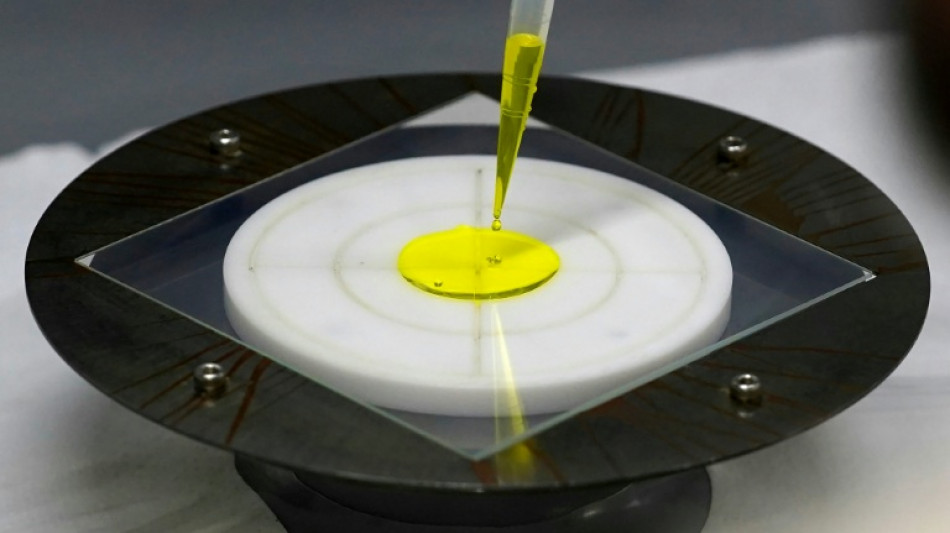
-
 Manila crowd cheers Pacquiao comeback, draw and all
Manila crowd cheers Pacquiao comeback, draw and all
-
South Korea rain death toll rises to 14: government
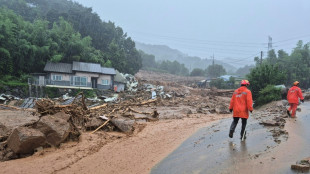
-
 Pacquiao held to draw by Barrios in world title return
Pacquiao held to draw by Barrios in world title return
-
Tearful relatives await news from Vietnam wreck rescue

-
 Anxious relatives await news from Vietnam wreck rescue
Anxious relatives await news from Vietnam wreck rescue
-
Syrian govt says fighting in Sweida halted after tribal forces pull out

-
 Schmidt says Wallabies must hit the ground running in Melbourne
Schmidt says Wallabies must hit the ground running in Melbourne
-
Rodriguez stops Cafu in super flyweight unification fight

-
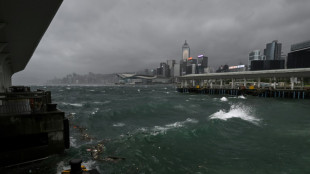 Hong Kong axes flights, classes as Typhoon Wipha approaches
Hong Kong axes flights, classes as Typhoon Wipha approaches
-
Fundora batters Tszyu to retain WBC superwelter crown

-
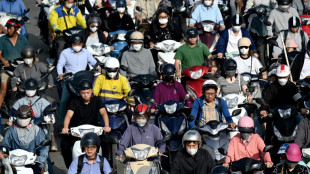 Hanoi scooter riders baulk at petrol-powered bikes ban
Hanoi scooter riders baulk at petrol-powered bikes ban
-
'Tiger like' Scheffler set to spoil McIlroy dream in British Open finale

-
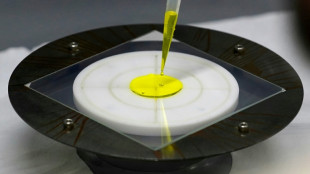 Japan sees bright future for ultra-thin, flexible solar panels
Japan sees bright future for ultra-thin, flexible solar panels
-
Driver charged after plowing into Los Angeles nightclub crowd, injuring 30

-
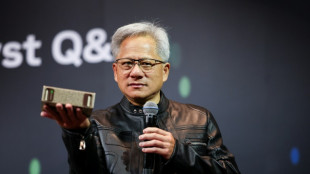 Jensen Huang, AI visionary in a leather jacket
Jensen Huang, AI visionary in a leather jacket
-
Restoring sea floor after mining may not be possible, researchers warn
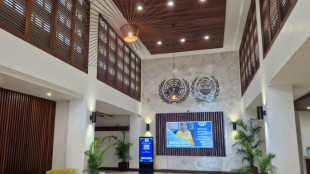
-
 Sunbears to elephants: life at a Thai wildlife hospital
Sunbears to elephants: life at a Thai wildlife hospital
-
Messi double as Miami bounce back against Red Bulls

-
 Dozens dead in Vietnam after Ha Long Bay tourist ferry sinks
Dozens dead in Vietnam after Ha Long Bay tourist ferry sinks
-
England complete unbeaten tour with 40-5 rout of USA

-
 Lions 'in good place' but wary of wounded Wallabies in second Test
Lions 'in good place' but wary of wounded Wallabies in second Test
-
'Discipline' behind heavyweight chamopion's Usyk desire to box on after knocking out Dubois

-
 Ten-woman Germany in Euros semis after stunning shootout win over France
Ten-woman Germany in Euros semis after stunning shootout win over France
-
Germany's Berger 'living best life' after Euros shootout heroics

-
 Usyk knocks out Dubois to become undisputed world heavyweight champion
Usyk knocks out Dubois to become undisputed world heavyweight champion
-
Ten-woman Germany beat France on penalties to reach Euro 2025 semis

-
 Usyk beats Dubois to become undisputed world heavyweight champion
Usyk beats Dubois to become undisputed world heavyweight champion
-
Gaza civil defence says Israeli fire kills 39 near two aid centres

-
 Ahly ban star striker Abou Ali from training camp
Ahly ban star striker Abou Ali from training camp
-
Erasmus has mixed views after nine-try Springboks beat Georgia

-
 US tech CEO in viral Coldplay concert video resigns
US tech CEO in viral Coldplay concert video resigns
-
Japan PM faces reckoning in upper house election

-
 Druze regain control of Sweida city after Syria announces ceasefire
Druze regain control of Sweida city after Syria announces ceasefire
-
Winning majors 'not easy' warns Scheffler despite British Open lead

-
 Dominant Scheffler stretches four shots clear at British Open
Dominant Scheffler stretches four shots clear at British Open
-
'Inevitable' Scheffler tough to catch, even for McIlroy

-
 Clashes, homes torched in south Syria's Sweida despite ceasefire
Clashes, homes torched in south Syria's Sweida despite ceasefire
-
Ukraine proposes fresh peace talks with Russia next week

-
 Gaza civil defence says Israeli fire kills 32 near two aid centres
Gaza civil defence says Israeli fire kills 32 near two aid centres
-
Young Swede Solberg extends Rally Estonia lead

-
 NHL all-time record scorer Ovechkin calls for Russian return to global sports
NHL all-time record scorer Ovechkin calls for Russian return to global sports
-
Memorable Moodie try highlights big win by Springboks

-
 Hong Kong axes flights, classes as Typhoon Wipha nears
Hong Kong axes flights, classes as Typhoon Wipha nears
-
Girelli says Italy's 'time has come' ahead of England Euros showdown

-
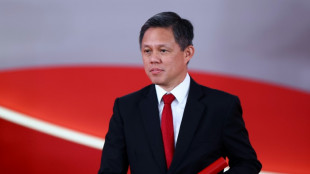 Singapore military helps battle cyberattack: minister
Singapore military helps battle cyberattack: minister
-
Bid to bring back pesticide in France sparks unprecedented petition

-
 Arensman climbs to misty Tour de France win as Pogacar extends lead
Arensman climbs to misty Tour de France win as Pogacar extends lead
-
Arensman climbs to Tour de France stage win as Pogacar extends lead

-
 Rashford closing in on Barcelona move: reports
Rashford closing in on Barcelona move: reports
-
Alfred coasts in London, but Lyles pipped in season-opening 100m


Japan sees bright future for ultra-thin, flexible solar panels
Japan is heavily investing in a new kind of ultra-thin, flexible solar panel that it hopes will help it meet renewable energy goals while challenging China's dominance of the sector.
Pliable perovskite panels are perfect for mountainous Japan, with its shortage of flat plots for traditional solar farms. And a key component of the panels is iodine, something Japan produces more of than any country but Chile.
The push faces some obstacles: perovskite panels contain toxic lead, and, for now, produce less power and have shorter lifespans than their silicon counterparts.
Still, with a goal of net-zero by 2050 and a desire to break China's solar supremacy, perovskite cells are "our best card to achieve both decarbonisation and industrial competitiveness," minister of industry Yoji Muto said in November.
"We need to succeed in their implementation in society at all costs," he said.
The government is offering generous incentives to get industry on board, including a 157-billion-yen ($1 billion) subsidy to plastic maker Sekisui Chemical for a factory to produce enough perovskite solar panels to generate 100 megawatts by 2027, enough to power 30,000 households.
By 2040, Japan wants to install enough perovskite panels to generate 20 gigawatts of electricity, equivalent to adding about 20 nuclear reactors.
That should help Japan's target to have renewable energy cover up to 50 percent of electricity demand by 2040.
- Breaking the silicon ceiling -
The nation is looking to solar power, including perovskite and silicon-based solar cells, to cover up to 29 percent of all electricity demand by that time, a sharp rise from 9.8 percent in 2023.
"To increase the amount of renewable energy and achieve carbon neutrality, I think we will have to mobilise all the technologies available," said Hiroshi Segawa, a specialist in next-generation solar technology at the University of Tokyo.
"Perovskite solar panels can be built domestically, from the raw materials to production to installation. In that sense, they could significantly contribute to things like energy security and economic security," he told AFP.
Tokyo wants to avoid a repeat of the past boom and bust of the Japanese solar business.
In the early 2000s, Japanese-made silicon solar panels accounted for almost half the global market.
Now, China controls more than 80 percent of the global solar supply chain, from the production of key raw material to assembling modules.
Silicon solar panels are made of thin wafers that are processed into cells that generate electricity.
They must be protected by reinforced glass sheets and metal frames, making the final products heavy and cumbersome.
Perovskite solar cells, however, are created by printing or painting ingredients such as iodine and lead onto surfaces like film or sheet glass.
The final product can be just a millimetre thick and a tenth the weight of a conventional silicon solar cell.
Perovskite panels' malleability means they can be installed on uneven and curved surfaces, a key feature in Japan, where 70 percent of the country is mountainous.
- Generating where power is used -
The panels are already being incorporated into several projects, including a 46-storey Tokyo building to be completed by 2028.
The southwestern city of Fukuoka has also said it wants to cover a domed baseball stadium with perovskite panels.
And major electronics brand Panasonic is working on integrating perovskite into windowpanes.
"What if all of these windows had solar cells integrated in them?" said Yukihiro Kaneko, general manager of Panasonic's perovskite PV development department, gesturing to the glass-covered high-rise buildings surrounding the firm's Tokyo office.
That would allow power to be generated where it is used, and reduce the burden on the national grid, Kaneko added.
For all the enthusiasm, perovskite panels remain far from mass production.
They are less efficient than their silicon counterparts, and have a lifespan of just a decade, compared to 30 years for conventional units.
The toxic lead they contain also means they need careful disposal after use.
However, the technology is advancing fast. Some prototypes can perform nearly as powerfully as silicon panels and their durability is expected to reach 20 years soon.
University professor Segawa believes Japan could have a capacity of 40 gigawatts from perovskite by 2040, while the technology could also speed up renewable uptake elsewhere.
"We should not think of it as either silicon or perovskite. We should look at how we can maximise our ability to utilise renewable energy," Segawa said.
"If Japan could show a good model, I think it can be brought overseas."
M.Thompson--AMWN